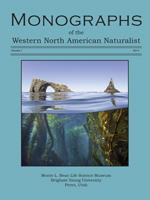Marine invertebrate faunas with mixtures of extralimital southern and extralimital northern faunal elements, called thermally anomalous faunas, have been recognized for more than a century in the Quaternary marine terrace record of the Pacific Coast of North America. Although many mechanisms have been proposed to explain this phenomenon, no single explanation seems to be applicable to all localities where thermally anomalous faunas have been observed. Here, we describe one such thermally anomalous fossil fauna that was studied on the second emergent marine terrace at Eel Point on San Clemente Island. The Eel Point terrace complex is a composite feature, consisting of a narrow upper bench (terrace 2a) and a broader lower bench (terrace 2b). Terrace 2b, previously dated from ∼128 ka to ∼114 ka, was thought to date solely to marine isotope stage (MIS) 5.5, representing the peak of the last interglacial period. Nevertheless, the fauna contains an extralimital northern species and several northward-ranging species, as well as an extralimital southern species and several southward-ranging species. Similar faunas with thermally anomalous elements have also been reported from San Nicolas Island, Point Loma (San Diego County), and Cayucos (San Luis Obispo County), California. U-series dating of corals at those localities shows that the thermally anomalous faunas may be the result of mixing of fossils from both the ∼100-ka (cool-water) and the ∼120-ka (warm-water) sea level high stands. Submergence, erosion, and fossil mixing of the ∼120-ka terraces by the ∼100-ka high-sea stand may have been possible due to glacial isostatic adjustment (GIA) effects on North America, which could have resulted in a higher-than-present local sea level stand at ∼100 ka. The terrace elevation spacing on San Clemente Island is very similar to that on San Nicolas Island, and we hypothesize that a similar mixing took place on San Clemente Island. Existing fossil records from older terraces elsewhere in California also show thermally anomalous elements, indicating that the scenario presented here for the last interglacial complex may have applicability to much of the marine Quaternary record for the Pacific Coast.
How to translate text using browser tools
9 September 2014
Interpreting the Paleozoogeography and Sea Level History of Thermally Anomalous Marine Terrace Faunas: A Case Study from the Last Interglacial Complex of San Clemente Island, California
Daniel R. Muhs,
Lindsey T. Groves,
R. Randall Schumann






